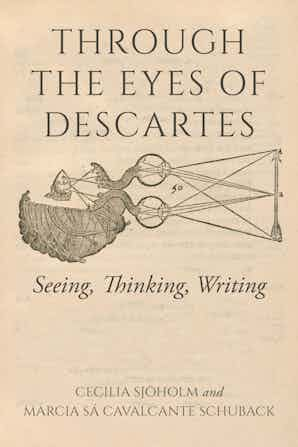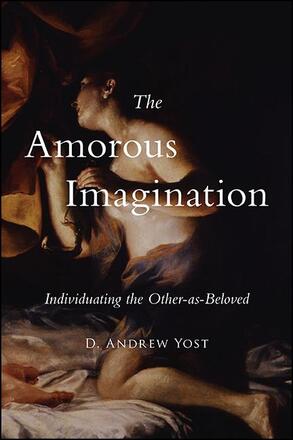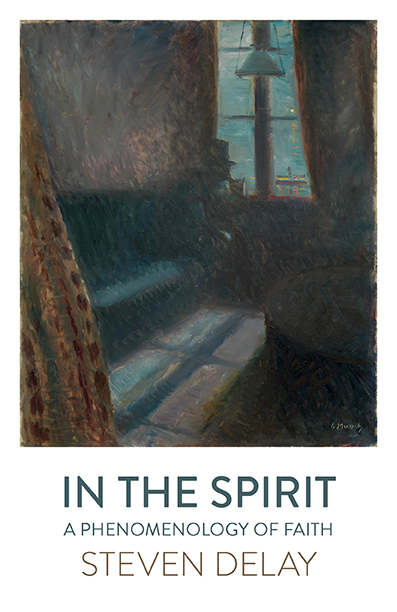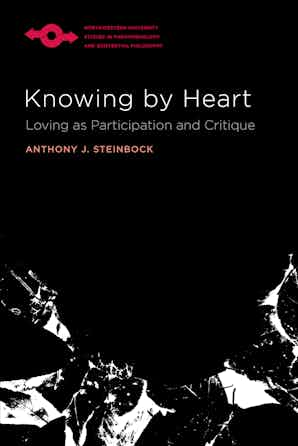 Il valore dell’altro: Intersoggettività, amore ed etica in Edmund Husserl
Il valore dell’altro: Intersoggettività, amore ed etica in Edmund Husserl
Itinerari filosofici
Mimesis
2023
Paperback
348
Reviewed by: Celia Cabrera (CONICET/ National Academy of Sciences of Buenos Aires)
Giulia Cabra’s book, Il valore dell’altro. Intersoggettività, amore ed etica in Edmund Husserl, proposes an insightful analysis of the intersection between two central themes of Husserlian phenomenology: Intersubjectivity and ethics. As indicated by the title, the guiding question that runs through the work concerns the value of the other, a topic of great relevance in phenomenological ethics. The question can be resumed as follows: How is the other given as a subject of value? More specifically: What conceptual elements of Husserl´s phenomenology provide the basis for recognizing the value of the other? Answering this question makes it necessary and justifies Cabra’s proposal for a complementary approach, insofar as it is a theme that besides being addressed at the axiological-ethical level must be anchored in the most basic foundations of Husserl´s theory of the experience of the other. Cabra´s book shows that this overlap of themes is fruitful in both directions: Ethical-axiological analyses expose the deeper meaning of some basic elements of Husserl´s transcendental theory of intersubjectivity (especially, with regard to his understanding of the lived body), and the transcendental theory of intersubjectivity lays the groundwork for an ethical account of alterity that goes beyond its own means (especially, through the analysis of love). In the author´s own words, the hypothesis that serves as a point of departure of the work is that “a synergistic reading of Husserl’s reflections on intersubjectivity and ethics allows for theoretically original and fruitful outcomes for the deepening of both realms within the author’s thought” (p. 307). Certainly, the task is not easy and requires a reading of a wide range of texts in which Husserl devoted himself to reflections on both intersubjectivity and ethics, at various stages of his philosophical production and with different methodological approaches. Cabra’s work proposes a journey through multiple writings of Husserl, tracing a thread that extends from the analyses of the experience of the other in the Fifth Cartesian Meditation to the research manuscripts on ethics from the Freiburg years, and which covers static, genetic, transcendental, personalist, and communitarian approaches.
In the process of laying the groundwork for addressing the question of the value of the other, the book delves into various topics in detail, many of which cannot be fully covered in this review. In the following sections, I will outline the main aspects developed in the book and delineate its broader argumentative strategy.
The book is divided into two main sections, each of which follows one of the two proposed paths: The first section follows the path through the lived body (Leib), while the second section follows the path through love (Liebe). Broadly speaking, the three chapters that make up the first section of the book (entitled La via del Leib: Individuazione, libertà, valore) aim to shed light on the fundamental elements that explain the constitution of the experience of alterity. This is accomplished by first delving into Husserl´s analyses of the sphere of owness and later going deeper into the intersubjectively shared world.
The first chapter is devoted to the transcendental theory of the experience of the other (Fremderfahrung) as developed by Husserl in the Fifth Cartesian Meditation and in related research manuscripts published in volumes XIII, XIV, and XV of Husserliana. The key question posed by the author there is whether such transcendental analysis contains elements that make it possible to highlight how the other subject is experienced as a subject of value (cf. p. 21). The chapter begins with a focus on the primordial sphere. Against this background, the author aims at showing the centrality of the lived body as an organ of perception (Wahrnehmungsorgan) and an organ of the will (Willensorgan). The role of corporeality in the constitution of perception, as developed by Husserl in the Dingvorlesungen (Hua XVI), is addressed showing that the lived body is a system of passive and free kinesthesia, on which perception depends. In order to clarify how the passage from the perceptual level to the volitional level is motivated, Husserl´s analyses of the “I can” in Ideas II are considered. The result of these analyses is that the lived body is the primary form in which the “awake subjectivity” (wache Subjektivität) manifests itself. Moreover, the Leib is the place where the perceptual-sensory layer and the personal-spiritual layer intermingle, and where the freedom of the incarnated transcendental ego is established (cf. p. 310).
Chapter 2 turns to the dynamics of the encounter with the other subject. A special analysis is devoted to the phenomenon of expression (Ausdruck), i.e., to the fact that the other appears always through an expressive body that manifests different degrees of will. It is by virtue of expression that the other appears as a subject of free movement, as a free subject. This chapter introduces one of the most important ideas of the work, namely, the freedom of the person which the author anchors on Husserl´s conception of the lived body. According to Cabra, given the conditions that make it possible for the other subject to be recognized as a transcendental subject, the same conditions also enable their recognition as a free subject. The Leib makes this transition possible and indicates the fundamental freedom of the other (cf. p. 313). This freedom is evidence of the fact that the person has a value of its own (Eigenwert). The proper value of the person is linked to their status of being a free individual, capable of being an ethical subject (as she will show later, this means responding to the categorical imperative). As she claims later on: “This confers upon it the predicate of the value of dignity (Würde): freedom makes the person different from every other worldly being and confirms the initial intuition of inviolability by the personal subject, already indicated by the identification of the Eigenheitssphäre” (p. 313). Bringing the themes of freedom and dignity to the fore is one of the merits of this book. To my knowledge, few works in the exegesis of Husserl´s writings address these themes, which remain in the background of his ethical account of the human person.
In this point, it is noticed that those elements of the experience which are the conditions of possibility of the intersubjective experience are not completely reducible to the primordial sphere, but refer to a personal intersubjective dimension of the Umwelt that only are disconnected from the Eigenheitsphäre by means of abstraction. This indicates the path taken in Chapter 3, which serves as a bridge to the second part of the book devoted to the axiological and ethical analyses. Cabra shifts there to the personalist perspective to consider intersubjective experience as a part of the surrounding world (Umwelt), which is a shared world. This shift of perspective to the personalist attitude is a crucial step to approaching the topic of the work: the comprehension of the other as a subject of value. As Cabra explains, “The encounter with the other, which is made possible because they appear through the Leib, is always inserted in a personal horizon. Only from this perspective is it possible to find the value of the other” (p. 159).
The second section of the work (La via della Liebe: Dovere e chiamata, empatia, prossimità), divided into four chapters, proceeds along the lines of the previously announced change of perspective, from the attitude focused on the sphere of owness to the personalist attitude. This section focuses on Husserl´s reflections on ethics from the Freiburg years, especially, on his analyses of love published in the fourth section of Husserliana XLII, Grenzprobleme der Phänomenologie.
Having introduced the Husserlian approach to love in Chapter 1 of this section, in which the author highlights the intentional emotional nature of love and its normative dimension, Chapter 2 has the precise aim of elucidating its inherently intersubjective character. Love takes on various forms, one of which is love as a phenomenon between persons, distinct from love for an object, for science, nature, etcetera. According to the author, personal love is love in the original, primary, and fundamental sense (cf. p. 232) or, as she also points out, the “paradigm of love” in that, through the experience of love, the value of the other subject and the duty toward them are experienced. Love is, thus, the founding moment of ethics. Since the primary reference (Bezug) of love is the other person, “neighborly love” (Nächstenliebe) is characterized as the highest ethical form of love.
The consideration of love as inherently intersubjective calls for an elucidation of its intentional structure and fulfillment. This is the task of the third chapter which explores the relationship between love and empathy (Einfühlung). Love does not fully coincide with empathy, it is a special form of empathy and, in a certain sense, it transcends empathy (cf. p. 237). In order to understand the connection between love and empathy, the double meaning of empathy, which goes back to Husserl´s manuscripts published in Hua XLII, is emphasized. On the one hand, empathy in a basic sense, which is analyzed by Husserl in the Fifth Cartesian Meditation, is a theoretical-cognitive form of grasping the other. This fundamental form of empathy is to be distinguished from empathy in an emotional sense, as a “participation in the life of the other” (p. 238) which enters into the individuality of the other person and is fulfilled through love. The introduction of the theme of individuality gives the reader a glimpse of the author´s aim: love grasps the other in their individuality, and this lays the grounds for grasping them as having a “value of uniqueness” (Einzigkeitswert). This aspect is developed in Chapter 4, which presents the guidelines for an axiology of love. I will discuss this final chapter in more detail since it introduces some complex ideas that deserve a deeper analysis, and it integrates the previous results of the investigation into its own argumentation.
While the previous chapters have reflected on the specific features of love as an intentional act -emphasizing its emotional and volitional character-, Chapter 4 aims to analyze the values of love (Liebeswerte). In other words, the focus now shifts from love as an act to what love is directed at. Among the aspects developed in this chapter, I would like to draw attention to three themes that hold a central place in the author´s line of reasoning: (1) The discussion of the subjectivity-objectivity of the values of love; (2) The comprehension of the relationship between the descriptive, axiological, and normative dimensions; (3) finally, the approach to the universality-singularity of the ought revealed through love. These aspects, which I separate only for the sake of exposition, are interrelated in the work.
With the first theme, Cabra addresses a classic problem of the philosophy of values: Is the value dependent upon the subject giving the value? And, if so, does this imply that the value is reducible to such act of giving? The question becomes more compelling when we consider that the focus of the work is the value of the other. That is, that the elucidation of the status of the values of love is a corollary to addressing the value of the other subject. In this context, the question can be reformulated as to whether the value of the other person is contingent upon the subjective turning towards in the act of valuing, or if it is an objective value “recognized” by the subject. In the author´s view, the values of love have both a subjective and an objective dimension. On the one hand, values of love are dependent upon the turning towards of the subject from her personal core, since they are connected to the innermost center of the person. In this regard, they possess a subjective dimension. On the other hand, love in a proper sense is directed toward that which holds value (cf. p. 271). In other words: Genuine love is love for what is worth loving. How is this dual character of values of love, both subjective and objective, to be understood? Cabra´s proposal can be summarized as follows: Values of love are objective values which have subjective relevance because they have a unique meaning for the singular person. In this way, the author seeks to illustrate the dynamics of constitution wherein something given as objective is apprehended through a subjective position taking. The textual foundation of her interpretation is to be found in the lecture Einleitung in die Philosophie from 1919/1920 where Husserl refers to values of love as “the same objective value as individual, subjective value of love” (Hua Mat IX, 146, note 1). In light of this, two implications can be drawn: (1) every value of love has an objective value and (2) every objective value can become a value of love (p. 266). With this, the author aims at distancing from the interpretations that “emphasize solely the subjective side of the constitution of the values of love without considering that subjective preference does not lack a fundamental objective level” (p. 267)
What is the outcome of this interpretation for the understanding of the value of the other? Applying the same dynamic between the subjective and objective dimensions, the conclusion is that the other subject is subjectively preferable (vorzüglich) and at the same time objectively endowed with value. The other is objectively a subject of value to the extent that they have a fundamental dignity as a person (p. 285).
At this point the work turns to the distinction between two forms of empathy developed in Chapter 3. The basis for recognizing the other as a subject of value is established by recognizing the other as a transcendental subject in empathy (in the first sense previously distinguished). What does love add to this level of recognition in empathy? The dimension of “exclusivity” and the “value of uniqueness” (Einzigkeitswert) of the other, which cannot be reduced to any of the previous levels of constitution (cf. p. 288). In the author´s words: “Love fulfills this first objective-formal level of personal valuation recognizing not only the `objective´ value of the other, that is, their being a transcendental subject with their individuality, but also considering them as a `unique´ subject, `subjectively preferable´ concerning other values, and deciding in their favor.” (p. 317) Interestingly, the general idea that the other is the primary value to be promoted, i.e., that love is primarily love for the other, which has been defended throughout the work, leads the author to an incisive proposal of a hierarchy of values of love, which could solve Husserl´s conclusion of a tragic “sacrifice” when confronted with the choice between values of love. Since, according to the author, each value of love derives from the value of the other, “the choice between different values of love would not have the character of a tragic conflict if it were a matter of Liebeswerte of different hierarchy according to different degrees to which love is realized as Nächstenliebe.” (p. 302)
With regard to the second point mentioned, although Cabra`s analyses in this chapter concentrate specifically on the values of love, her reflections also put forward a thesis regarding the broader question of the relationship between facts and values, broadly considered. In the author´s interpretation, Husserl´s theory of value responds to the demand to consider that facts and values are not opposing categories, and that there is no unbridgeable gap between the descriptive and normative moments (cf. p. 279). In fact, the idea that something has value because it is worth of value aims to express the close connection between empirical properties and value properties (although, as the author affirms, Husserl does not clarify the nature of this connection). This would bring Husserl´s position closer to that of Brentano and distance it from Schelerian axiology (cf. p. 277).
It is also interesting to note how the work thematizes the absolute ought (absolutes Sollen) that is manifested to the person through love. The values of love have a normative and motivational force that becomes a guiding principle for the person´s life. Because of its connection to values, it is argued that in love the absolute ought is manifested immediately to the person. This means that the normative level does not “supervene” or is superimposed, but is implicit in the axiological dimension (cf. p. 304). In this way, not only is the axiological level not extrinsic to the descriptive level but also the normative level is not extrinsic to the axiological level.
Finally, the transition from the axiological level of values of love to the normative level of the absolute ought provides the author with the opportunity to reflect on the special relationship between universality and singularity that love brings about: In the dynamics of love, the universal is manifested in the singular. The other subject is experienced as a value whose realization enables the fulfillment of the universal categorical imperative. In other words: Through love, the universal categorical imperative is unveiled to the singular individual. Thus, love and vocation represent the “singularized universal” ( p. 302) since it is only in the encounter with another subject that the person can respond to the call to act according to the categorical imperative.
A final aspect of this chapter that I would like to mention is that throughout the analyses devoted to Husserl´s phenomenology of values, the author offers a clarification of the meaning of concepts that can easily lead to ambiguities, and proposes its own interpretation regarding their distinction: Among other things, a special consideration is given to the use of the terms “value of love”, “personal value”, “subjective value”, and “individual value” (cf. pp. 267-270), and to the difference between “having value”, and “being a value” (cf. p. 271). These clarifications are important not only for the reader of this book but also for the reader of Husserl’s work, especially when dealing with texts on the emotional-evaluative sphere, which due to its elusive nature requires the use of a complex set of terminology for its description.
The work wraps up with a conclusion that summarizes how the two paths taken (Leib and Liebe) intersect and it offers a methodological reflection on how the static approach inherent in the analysis of the Fremderfahrung is complemented by the genetic perspective. According to this, love brings with it a revision of the static foundational model in that the other subject is immediately experienced as endowed with value, as a ‘phenomenological absolute’: “On the one hand, the analysis of the Fremderfahrung, and within it the primary role of the Leib, show the static conditions of possibility for recognizing the other subject as a subject of value, through the consideration of their freedom, expressed in the Leib. On the other hand, love as a gaze that reveals the genesis of the primary manifestation of the value of the other subject and the duty towards them, represents the place where intersubjectivity and ethics meet at its highest form” (p. 319).
Summing up, it is impossible not to notice that this book is the result of an extensive and meticulous research. In addition to the level of detail achieved in the analyses, and the careful interweaving of the different themes and methodological approaches in the construction of the work, I would like to highlight the originality of Cabra’s proposal. From the perspective of the precise question she aims to answer, she puts forward reading hypotheses on difficult aspects of Husserlian phenomenology of values that are still not settled by Husserl´s scholars. This is very fruitful in a context where Husserlian analyses of values are being rediscovered and increasingly debated, thanks to the publication of the Studien zur Struktur des Bewusstseins (Hua XLIII, 1-3). More generally, as the author affirms, with the exception of Janet Donohoe´s work Husserl on Ethics and Intersubjectivity from 2016,[1] the explicit connection between Husserl´s analyses of intersubjectivity and his ethical thinking has been missing in the critical literature on his work to date (cf. p. 5). Il valore dell`altro fills this gap through a deep study, documented in detail in Husserl’s texts that reveals to the reader a path to grasp the profound connection between these two themes. In addition to being a valuable tool for scholars, her work contributes to the understanding of the unity that permeates Husserl’s philosophical project, and to further promote the growing studies of Husserlian ethics and value theory.
[1] Janet Donohoe. 2016. Husserl on Ethics and Intersubjectivity. From Static to Genetic Phenomenology. University of Toronto Press.








